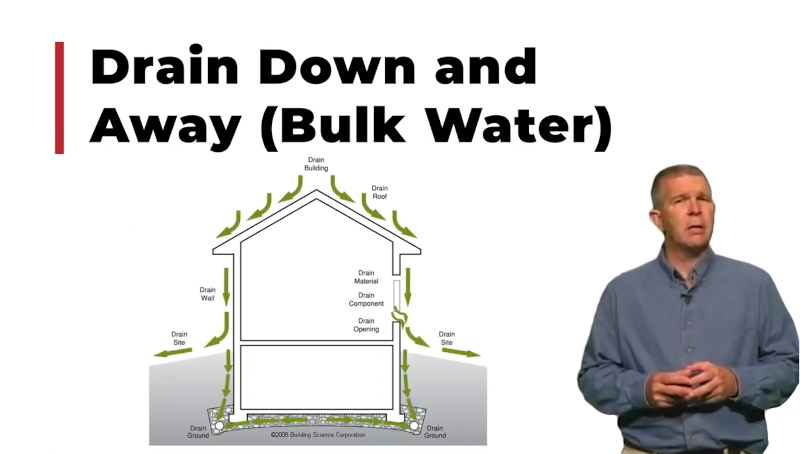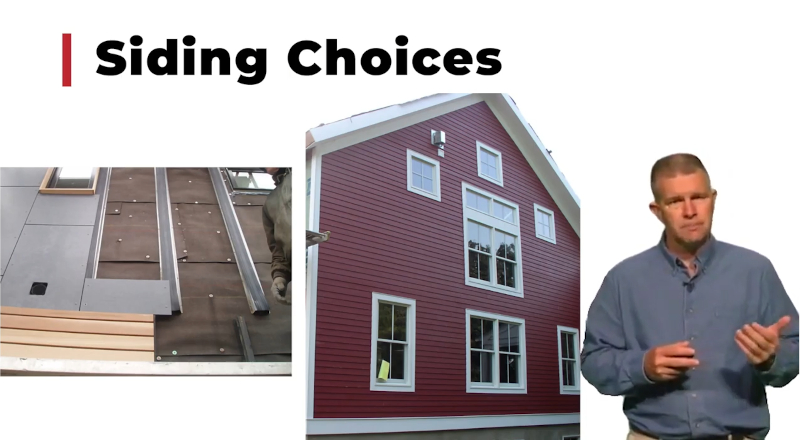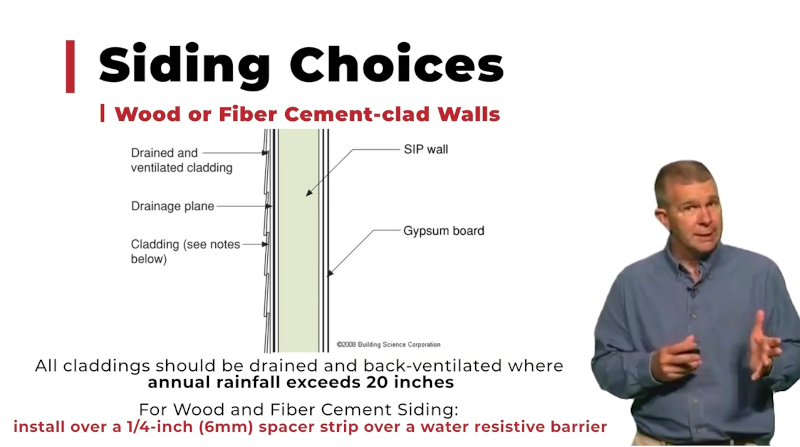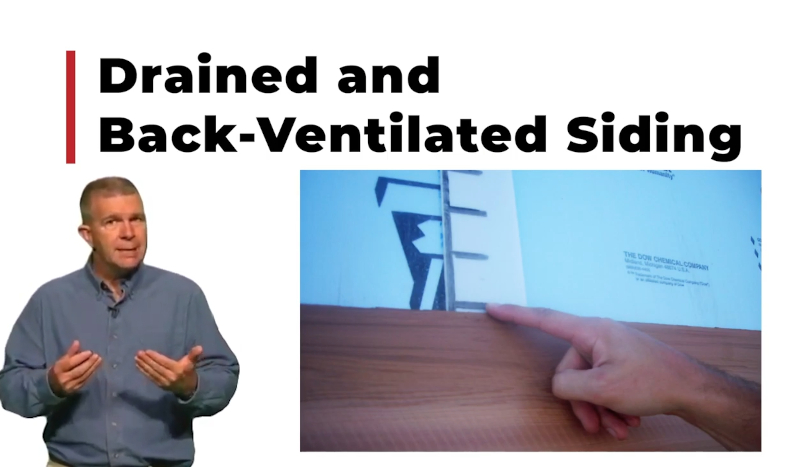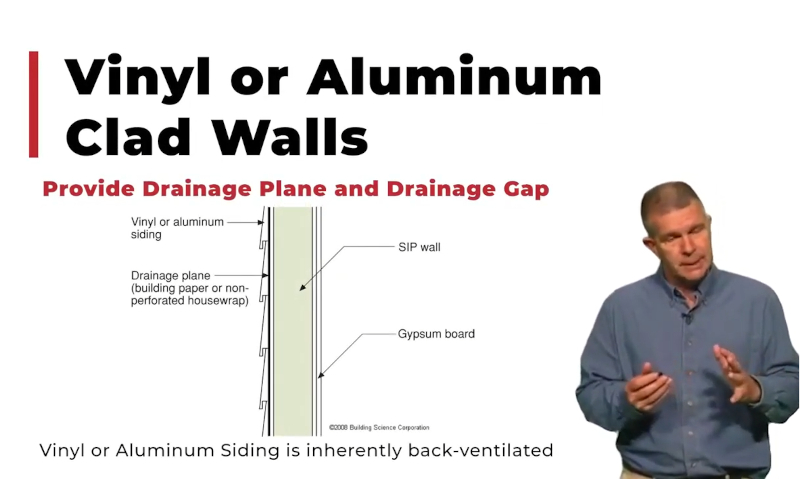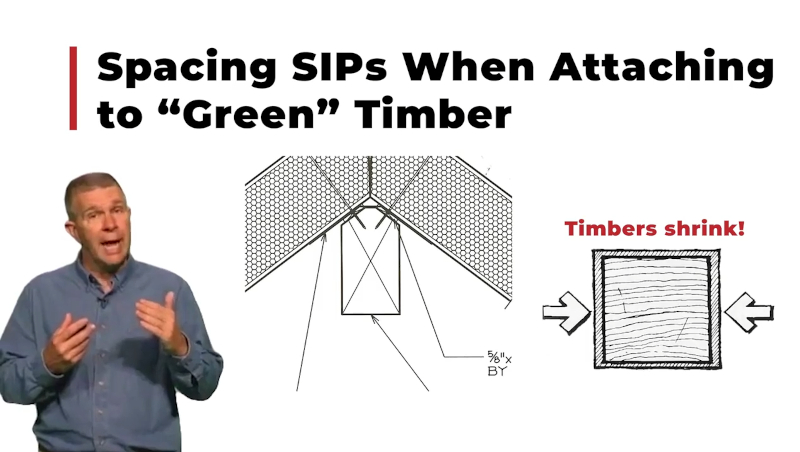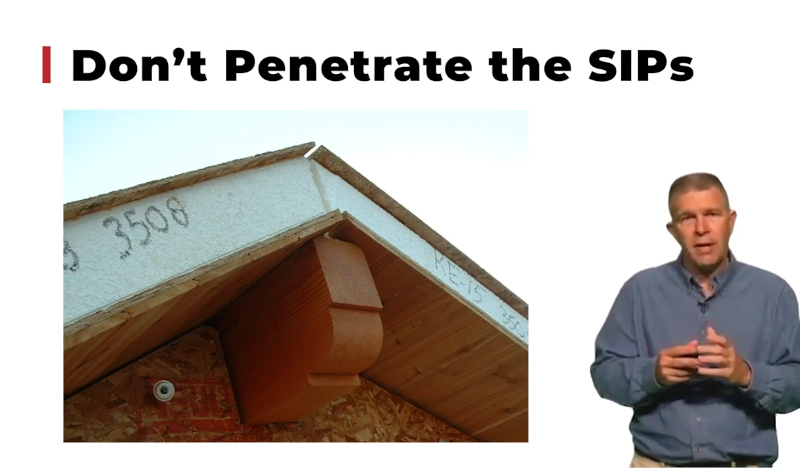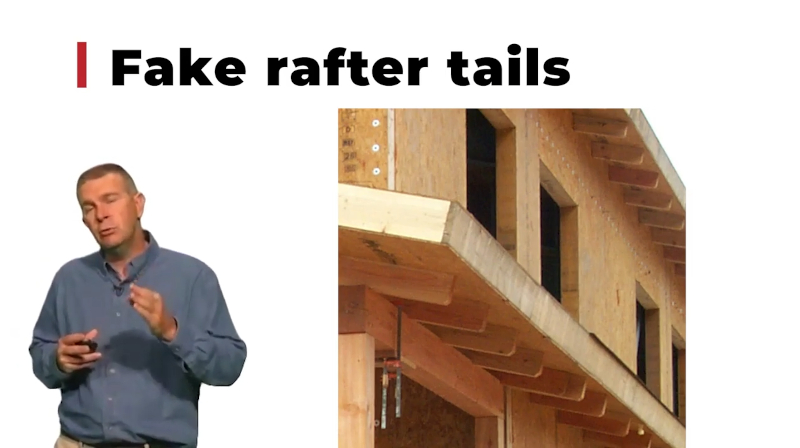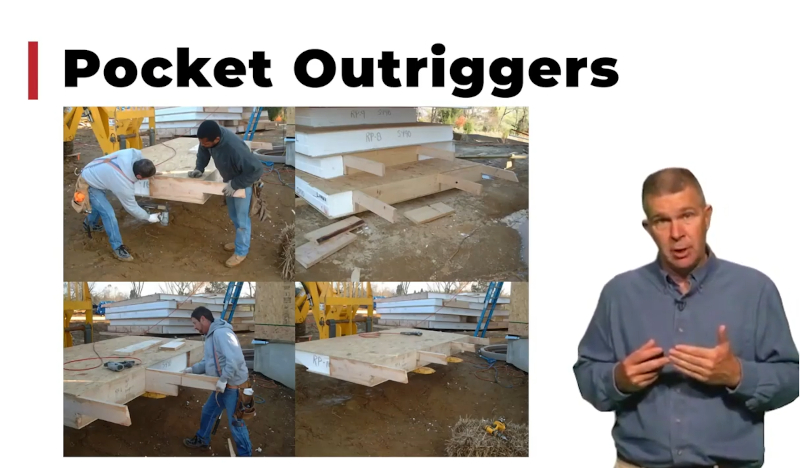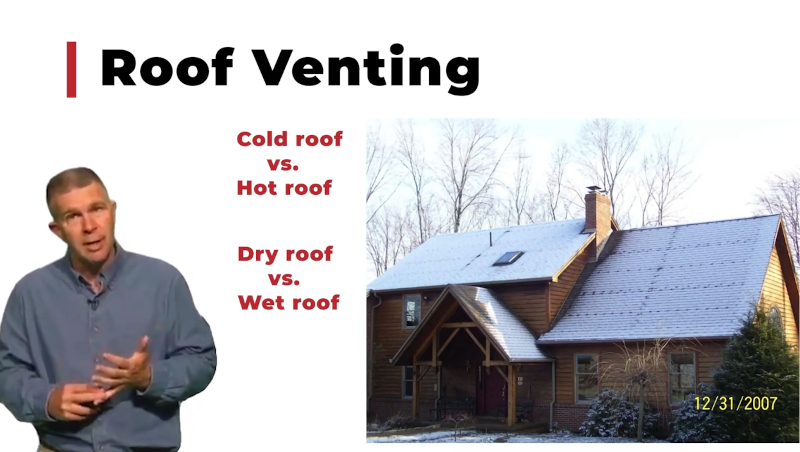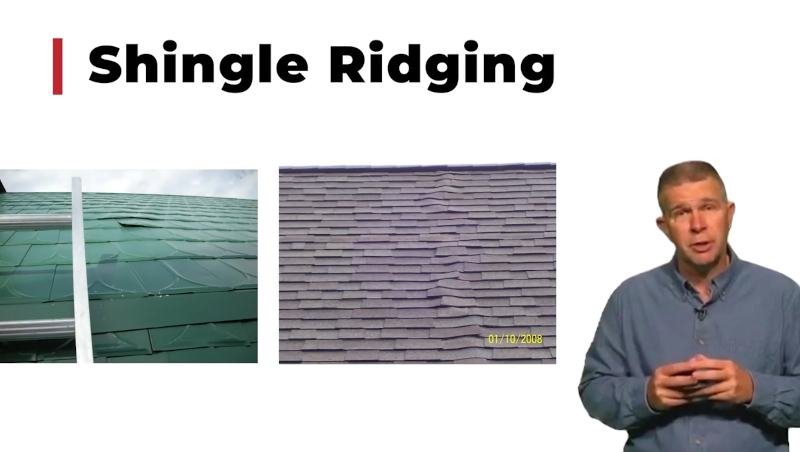What Covers the SIP Envelope?
Image 
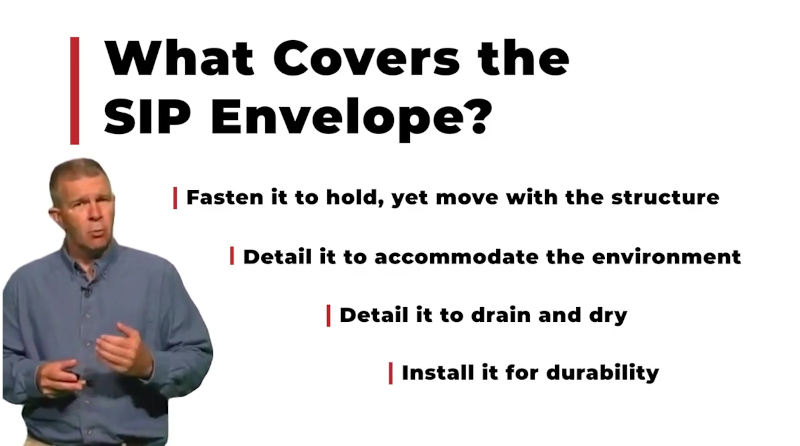
Fasten it to hold, yet move with the structure
Detail it to accommodate the environment
Detail it to drain and dry
Install it for durability
ID:(229, 0)
Siding Choices (2)
Image 
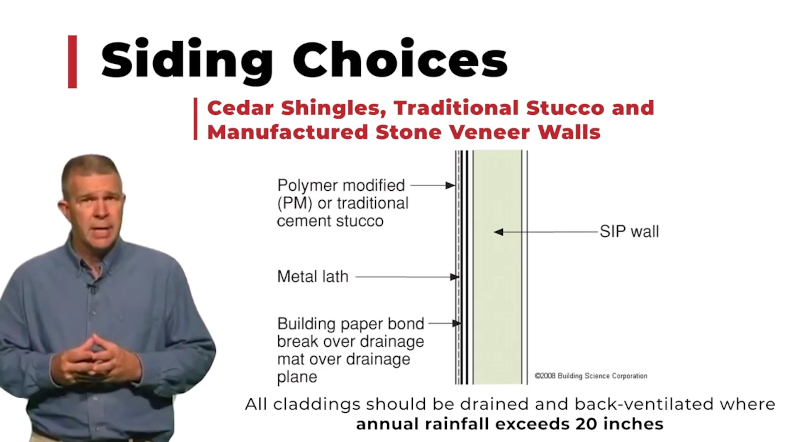
Cedar Shingles, Traditional Stucco and Manufactured Stone Veneer Walls
ID:(231, 0)
Specifying the Fastening Schedule
Image 
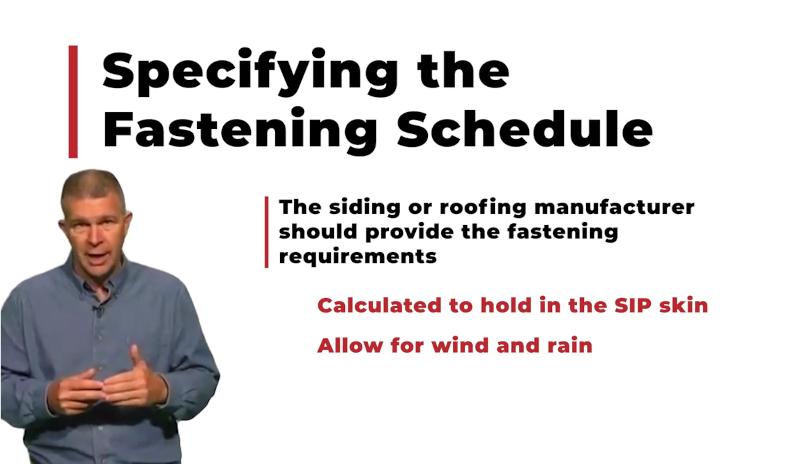
The siding or roofing manufacturer should provide the fastening requirements
- Calculated to hold in the SIP skin
- Allow for wind and rain
ID:(235, 0)
Window and Door Installation
Image 
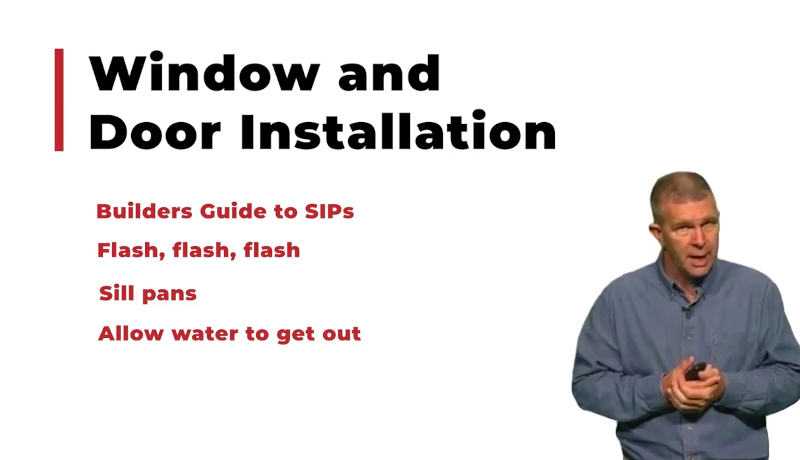
Builders Guide to SIPs
Flash, flash, flash
Sill pans
Allow water to get out
ID:(236, 0)
Interior Finishes
Image 
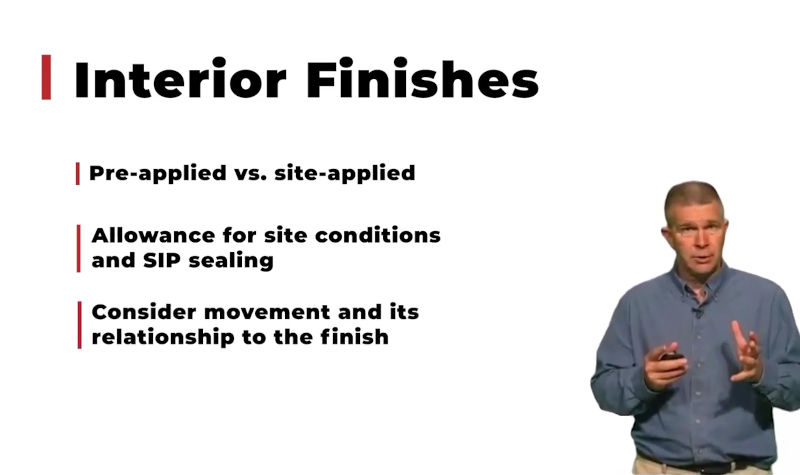
Pre-applied vs. site-applied
Allowance for site conditions and SIP sealing
Consider movement and its relationship to the finish
ID:(238, 0)
Specifying the Fastening Schedule
Image 
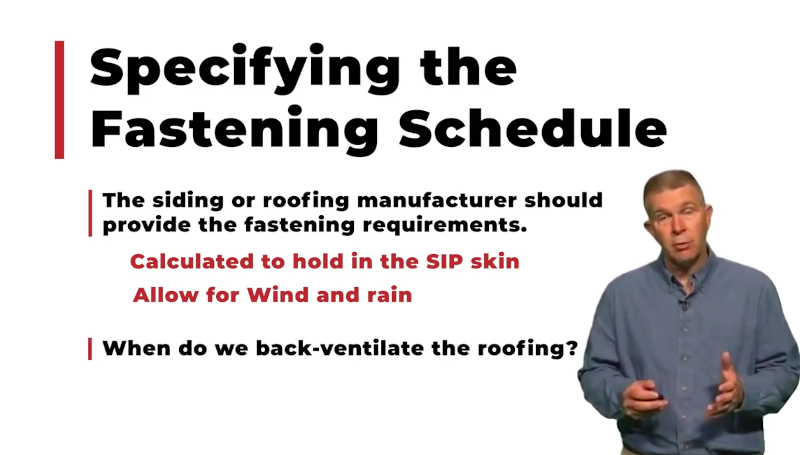
The siding or roofing manufacturer should provide the fastening requirements.
- Calculated to hold in the SIP skin
- Allow for wind and rain
When do we back-ventilate the roofing?
ID:(244, 0)

